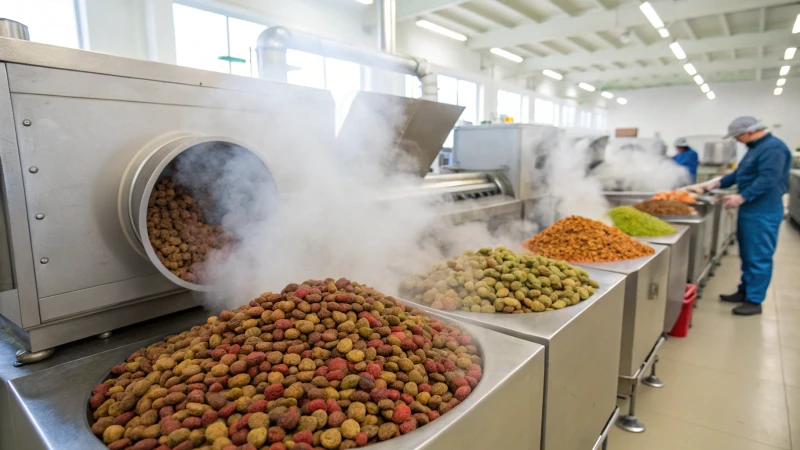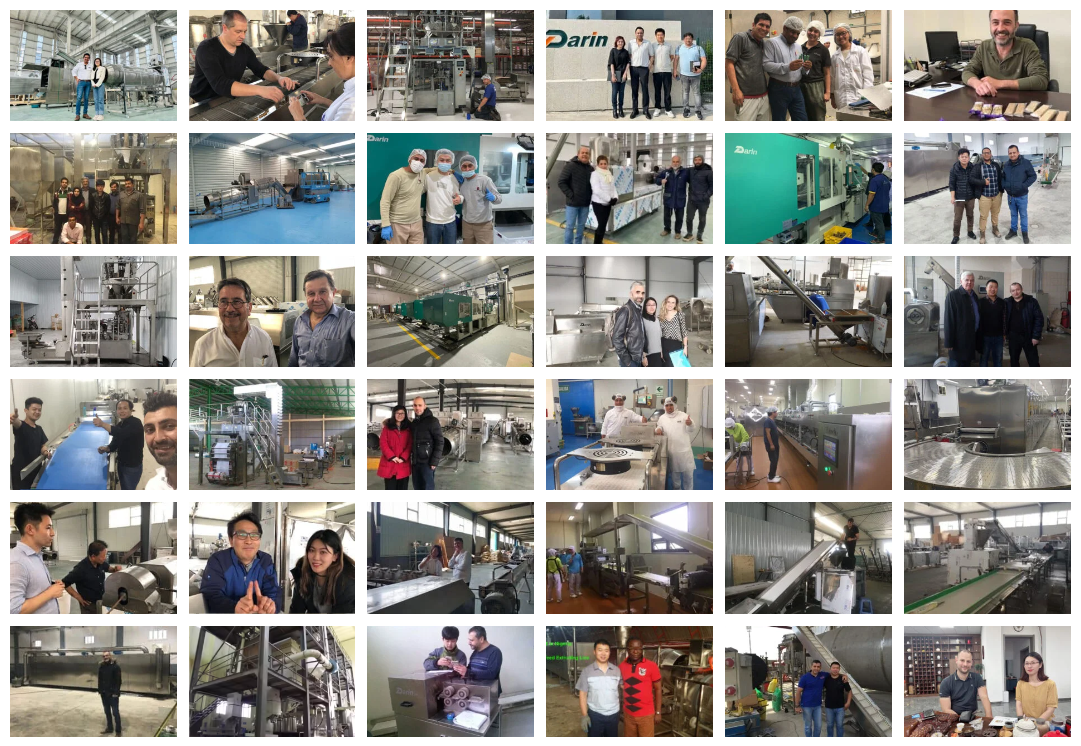
For pet food manufacturers, especially startups or small-to-medium enterprises, one of the most pressing concerns is cost—specifically, how much capital is needed to purchase, install, and operate a dog food production machine. Misjudging this investment can result in cash flow disruptions, low ROI, or even business failure. However, by understanding the full cost spectrum—from machine procurement and setup to daily operation—you can accurately budget and plan for sustainable growth. In this article, we break down each component of cost so you can make confident, profitable decisions.
The total costs involved in buying and operating a dog food machine include the initial purchase price (\$10,000 to \$500,000+ depending on machine type), installation and shipping costs (10–20% of equipment cost), ongoing energy and maintenance expenses, labor wages, spare parts, and raw material usage. Additionally, certifications, automation level, and production capacity significantly influence both upfront and operational costs.
Whether you're launching a new pet food line or upgrading your current processing line, understanding these cost variables will help you choose the right equipment and avoid hidden expenses. Let’s dive deep into each cost category with real-world examples and comprehensive tables.
Dog food machines typically require expensive post-purchase investments such as energy, maintenance, and labor.True
Ongoing costs like electricity, wear parts, and skilled labor are significant in the long-term operation of dog food machines.
Cost Breakdown of Buying and Operating a Dog Food Machine
🏭 1. Equipment Purchase Price
Dog food machinery comes in a variety of configurations, capacities, and levels of automation. Here’s a cost range based on different machine types:
| Machine Type | Output Capacity (kg/h) | Price Range (USD) | Description |
|---|---|---|---|
| Small-Scale Single Screw Extruder | 50–150 kg/h | \$10,000 – \$30,000 | Suitable for startups, R\&D, or specialty pet food |
| Twin-Screw Pet Food Extruder | 150–500 kg/h | \$30,000 – \$100,000 | Mid-scale commercial use |
| Fully Automated Production Line | 500–2000+ kg/h | \$120,000 – \$500,000+ | Includes conveyor, dryer, flavoring machine, packaging unit |
- Automation increases costs but significantly reduces labor and improves consistency.
- Higher throughput machines demand greater upfront investment but improve ROI over time.
🚛 2. Shipping, Customs, and Installation
| Cost Item | Estimated Cost (% of machine price) | Example (on \$100,000 unit) |
|---|---|---|
| International Shipping | 5%–8% | \$5,000–\$8,000 |
| Customs/Duties | 3%–10% | \$3,000–\$10,000 |
| Onsite Installation | 5%–12% | \$5,000–\$12,000 |
Note: Some suppliers like Darin Machinery offer overseas installation guidance or remote commissioning support.
⚡ 3. Energy Consumption
Operating a dog food machine involves high electrical consumption, especially during extrusion and drying.
| Component | Average Power Consumption | Power Source | Daily Cost (8 hrs, est.) |
|---|---|---|---|
| Twin-Screw Extruder | 45–75 kW | Electricity | \$40–\$80 |
| Electric Dryer | 30–60 kW | Electricity | \$25–\$60 |
| Flavoring System | 5–10 kW | Electricity | \$4–\$8 |
Tip: Opting for steam heating dryers can save costs in regions with low steam costs.
👷 4. Labor Costs
| Labor Role | Qty Needed | Monthly Salary (USD) | Annual Cost |
|---|---|---|---|
| Line Operator | 2 | \$800–\$1,200 | \$19,200 |
| Maintenance Technician | 1 | \$1,000–\$1,500 | \$15,000 |
| Quality Control & Packing | 2–3 | \$600–\$1,000 | \$21,600 |
Automation reduces headcount but skilled workers are still required for control panels, recipe management, and troubleshooting.
🧯 5. Maintenance & Spare Parts
Dog food machines have wear parts like screws, barrels, knives, and belts that need regular replacement.
| Part Name | Lifespan (hrs) | Replacement Cost | Annual Cost Estimate |
|---|---|---|---|
| Screw & Barrel | 5,000–8,000 | \$3,000–\$5,000 | \$5,000–\$8,000 |
| Cutter Blades | 1,000–2,000 | \$300–\$600 | \$1,000 |
| Bearings, Belts | 2,000–4,000 | \$100–\$500 | \$1,000–\$2,000 |
Annual maintenance budget: \~\$8,000–\$12,000 depending on output and usage intensity.
📦 6. Raw Materials and Recipe Costs
Ingredient cost is a recurring operating cost and varies based on formulation:
| Ingredient Type | Cost per Ton (USD) | Typical Ratio in Formula (%) |
|---|---|---|
| Corn, Rice, Wheat | \$250–\$400 | 40–50% |
| Meat Meal/Fish Meal | \$800–\$1,200 | 20–30% |
| Fats & Oils | \$900–\$1,300 | 5–10% |
| Vitamins/Minerals | \$1,000–\$2,000 | 1–3% |
Estimated feed material cost per ton of dog food: \$450–\$800.
✅ 7. Certifications, Compliance, and Licensing
Depending on your market (EU, US, Asia), machine-related and product certifications might add costs:
| Certification Type | Cost Range (USD) | Remarks |
|---|---|---|
| CE Certification | \$1,500–\$5,000 | Mandatory for Europe |
| FDA Compliance (US) | \$2,000–\$10,000 | For product export |
| ISO/Factory Audit Prep | \$2,000–\$7,000 | Supplier-dependent |
These are one-time or infrequent costs but crucial for legal operation and brand credibility.
📊 Total Cost Scenario Examples
| Scenario | Startup Line | Commercial Line | Industrial Line |
|---|---|---|---|
| Equipment Purchase | \$25,000 | \$90,000 | \$280,000 |
| Shipping + Installation | \$7,000 | \$13,000 | \$40,000 |
| Energy Cost (Monthly) | \$2,000 | \$3,500 | \$8,000 |
| Labor (Annual) | \$30,000 | \$48,000 | \$90,000 |
| Maintenance (Annual) | \$5,000 | \$9,000 | \$15,000 |
| Certification | \$3,000 | \$5,000 | \$7,000 |
| Total (Year 1) | \$92,000 | \$168,500 | \$440,000 |
📌 Additional Factors That Influence Cost
📍1. Customization Level
- Custom mold dies, coating systems, or inline mixers can increase initial cost by 10%–30%.
📍2. Automation & SCADA Systems
- Adding PLC + touchscreen + recipe memory adds \$5,000–\$20,000.
- AI monitoring or IoT remote control adds more.
📍3. Space & Utility Infrastructure
- Space requirements: 80–150m² for small lines, up to 500m² for large-scale lines.
- Additional cost for piping, water/steam/air utilities.
Ending Thoughts
Understanding all cost aspects of dog food machine ownership—from purchase to production—will help you make smart financial plans, avoid budget overruns, and select the right machine for your scale. Whether you're producing premium grain-free pet food or large-volume economy kibble, Darin Machinery can support your business with cost-effective, automated solutions tailored to your needs.
📞 Contact Darin Machinery for a Quote
Want to get a tailored quotation based on your expected production capacity, location, and pet food recipe? Contact Darin Machinery now and let our team help you design a complete pet food production solution that matches your budget and business goals.











